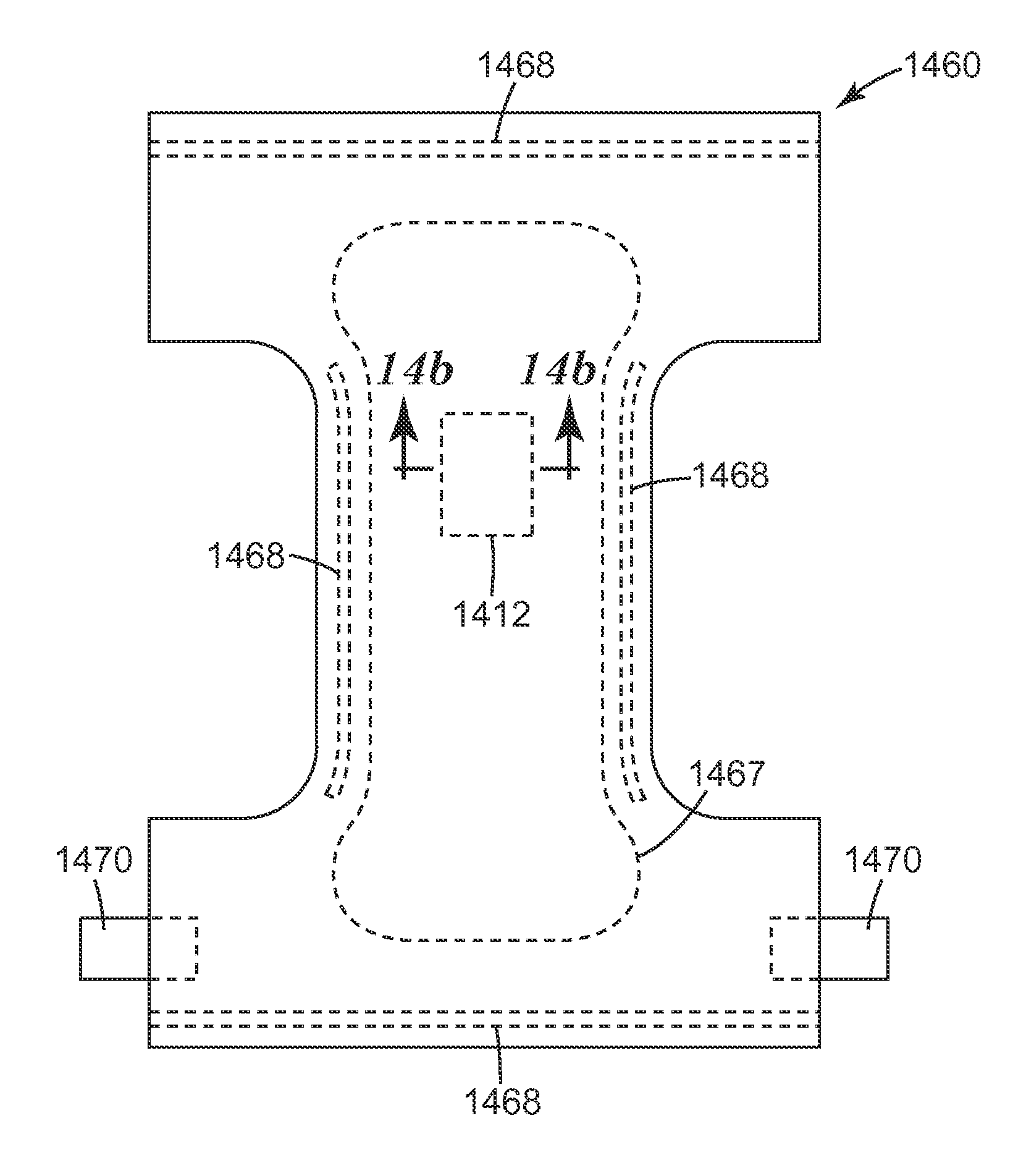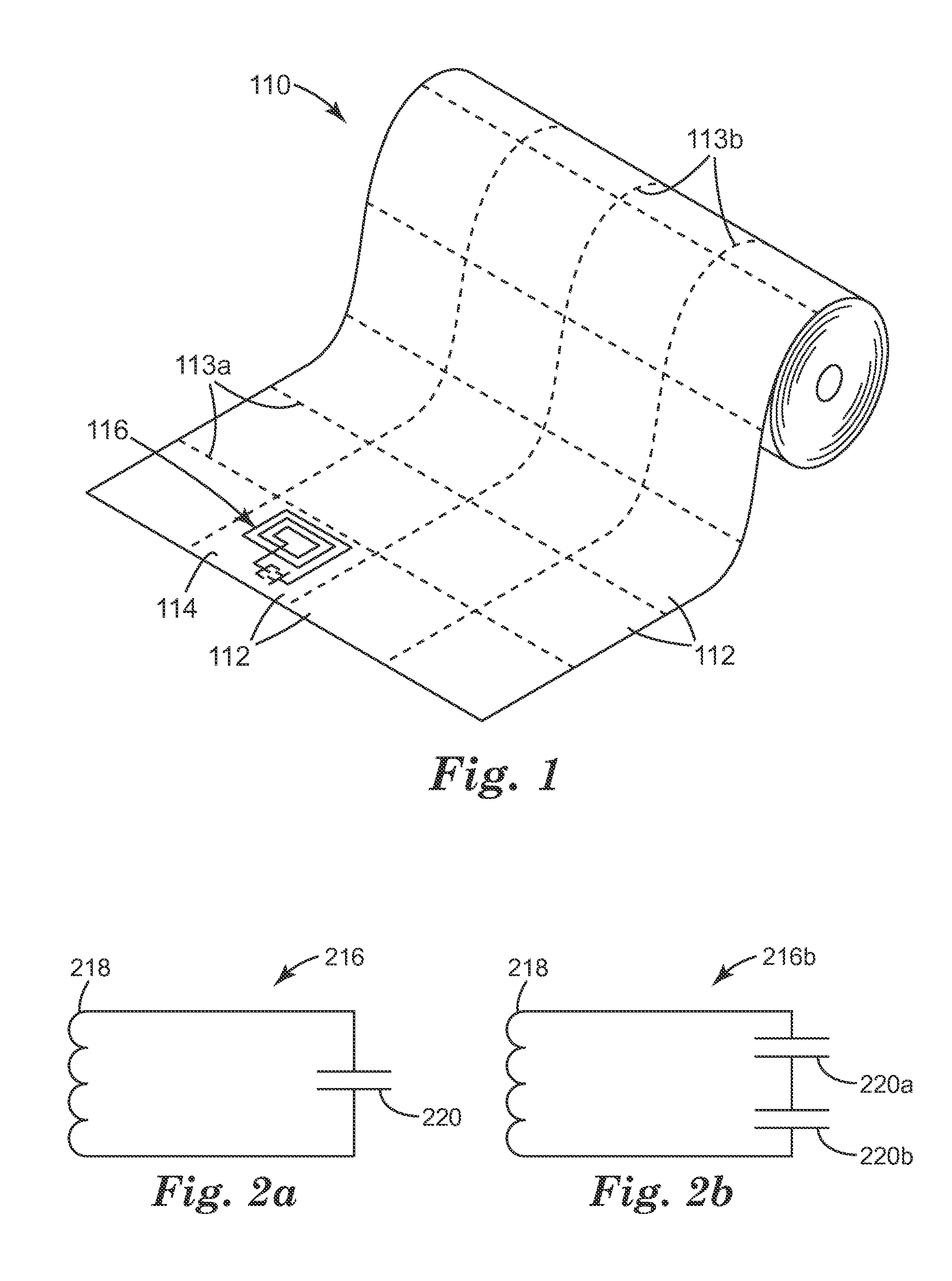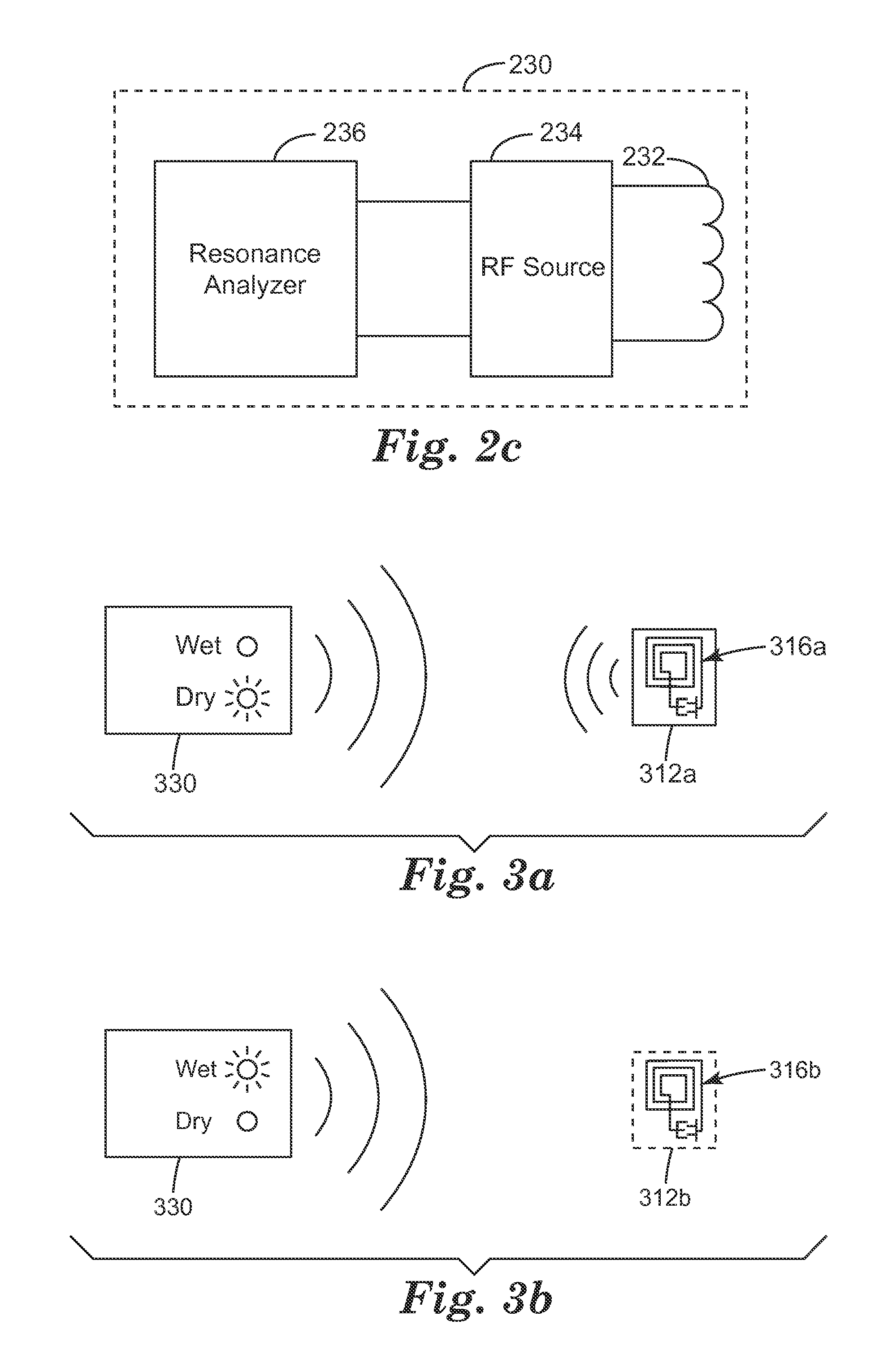Wetness sensors
a sensor and wet body technology, applied in the field of wet body sensors, can solve the problems of substantial inoperative operation of the rf circui
- Summary
- Abstract
- Description
- Claims
- Application Information
AI Technical Summary
Benefits of technology
Problems solved by technology
Method used
Image
Examples
example 1
[0095]A sheet of polyvinyl alcohol (PVA) film (available as “Monosol M8630” from Monosol, LLC, Portage, Ind., USA) having a measured thickness of two mils (about 51 micrometers) was used as the self-supporting substrate. The sheet of PVA film was held down on a silk screening table using vacuum. Placed against this sheet was a 157 mesh silk screen, the silk screen having imaged therein an array of patterns corresponding to the printed circuit elements 1116 of FIG. 11. The particular pattern of the example was an inductive coil having about six turns arranged in a spiral. The conductive ink was then pattern-wise applied to the PVA sheet through the silk screen by applying even pressure to a squeegee. The silk screen was then removed, yielding the printed sheet 1110 as generally depicted in FIG. 11. The printed sheet was allowed to air dry overnight on a drying rack. The procedure was repeated for the application of a total of three different conductive inks (CI-2001, CI-5001, CI-1001...
examples 2-10
[0100]Examples 2 through 10 describe the fabrication of strip-shaped and U-shaped samples having a layer of conductive material completely covering one major surface or side of the respective strip-shaped or U-shaped substrate. Such samples may be used, for example, as jumpers in the disclosed tuned RF circuits. However, the reader will understand that the design of such samples can be readily modified, e.g. by suitably patterning the electrically conductive material to provide tags having one or more inductive coil(s) and / or other circuit element(s) carried by a substrate, such a tag representing or providing at least a portion of a tuned RF circuit. Such a tag would have analogous electrical properties (before and after wetting) as those reported below for the samples of Examples 2-10.
example 2
[0101]Individual sheets of polyvinyl alcohol (PVA) film (available as “Monosol M8630” from Monosol, LLC, Portage, Ind., USA) having measured thicknesses of 2, 4, and 6 mils (about 51, 102, and 153 micrometers respectively) were used as self-supporting substrates. Silver films were coated onto 127 mm by 178 mm samples of the PVA film substrates by magnetron physical vapor deposition. The silver films were sputter deposited from a silver metal target. The PVA substrates were placed on a substrate holder set up inside a vacuum chamber with a sputtering silver target located at a height of 178 mm above the substrate holder. After the chamber was evacuated to 1×10−5 torr base pressure, sputter gas argon was admitted inside the chamber at a flow rate of 50 sccm (standard cubic centimeter per minute) using a mass flow controller. The total pressure of the chamber was adjusted to 2 milliTorr. Sputtering was initiated using a DC power supply at a constant power level of 0.10 kilowatts. The s...
PUM
 Login to View More
Login to View More Abstract
Description
Claims
Application Information
 Login to View More
Login to View More - R&D
- Intellectual Property
- Life Sciences
- Materials
- Tech Scout
- Unparalleled Data Quality
- Higher Quality Content
- 60% Fewer Hallucinations
Browse by: Latest US Patents, China's latest patents, Technical Efficacy Thesaurus, Application Domain, Technology Topic, Popular Technical Reports.
© 2025 PatSnap. All rights reserved.Legal|Privacy policy|Modern Slavery Act Transparency Statement|Sitemap|About US| Contact US: help@patsnap.com



